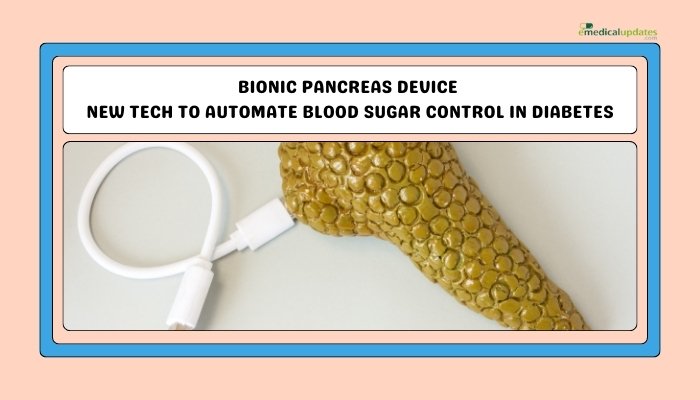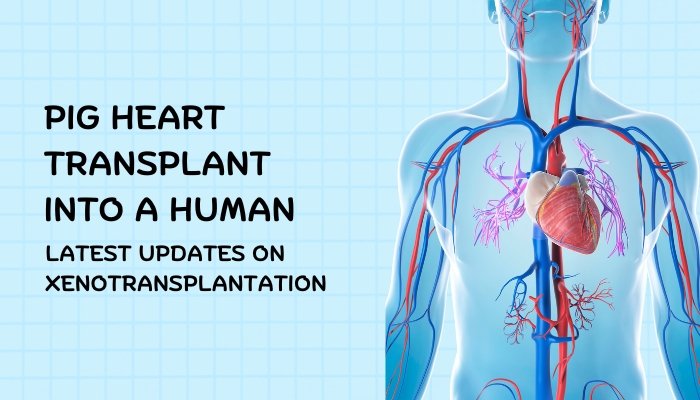Introduction
Diabetes affects hundreds of millions of people worldwide, requiring continuous monitoring of blood sugar (glucose) levels and careful balancing of insulin, diet, and physical activity. For those with type 1 diabetes, especially, daily tasks like counting carbohydrates, checking glucose multiple times, and administering insulin doses can be mentally and physically demanding.
In recent years, scientists and medical device companies have focused on creating a more seamless solution: bionic (or artificial) pancreas systems that automatically manage blood sugar using advanced algorithms, continuous glucose monitoring, and insulin pumps.
A bionic pancreas device is designed to mimic the endocrine function of a healthy pancreas—automating insulin delivery, and in some prototypes, even adding glucagon microdoses to prevent low blood sugar.
While still evolving, these devices aim to dramatically lessen the workload on patients, reduce hypoglycemia risk, and improve long-term health outcomes. This article explores how bionic pancreas technology works, recent breakthroughs, potential benefits, and ongoing challenges before wide-scale adoption becomes a reality.
Why We Need a Bionic Pancreas
The Daily Challenges of Diabetes Management
People with type 1 diabetes must manually approximate insulin doses based on meals, exercise, stress, and other variables. Even small miscalculations can lead to hyperglycemia or dangerous hypoglycemia. Moreover, type 1 diabetes includes the risk of diabetic ketoacidosis when insulin is insufficient. For those with type 2 diabetes requiring insulin, similar—though often less stringent—challenges exist in dose adjustments and glucose monitoring.
Key burdens include:
- Frequent fingerstick checks or reliance on continuous glucose monitors (CGMs).
- Multiple daily injections or continuous subcutaneous insulin infusion (CSII) via a pump.
- Fear of nighttime hypoglycemia.
- Constant vigilance in adjusting insulin for diet or activity changes.
Automating Insulin Delivery
The core appeal of a bionic pancreas is an “all-in-one” system that monitors glucose and autonomously administers insulin (and sometimes glucagon). This shift:
- Reduces Human Error: Minimizes guesswork in dosing.
- Improves Time in Range: Maintaining blood glucose in a healthy target range for more hours of the day.
- Enhances Quality of Life: Eases mental fatigue from diabetes tasks, offering greater freedom and confidence.
How Bionic Pancreas Systems Work
Main Components
- Continuous Glucose Monitor (CGM): Sensor inserted under the skin, measuring interstitial glucose every few minutes. Examples: Dexcom G6, FreeStyle Libre.
- Insulin Pump: A device worn externally (often clipped to clothing) or patch-style. Delivers insulin through a cannula.
- Control Algorithm: Sophisticated software—often on a smartphone or dedicated controller—that processes CGM data, calculates insulin dosing in real time, and commands the pump accordingly.
Some advanced prototypes also incorporate a glucagon reservoir, providing an additional hormone to raise blood sugar when needed, akin to the pancreas’s alpha cell function.
Closed-Loop vs. Hybrid Systems
- Closed-Loop: The system autonomously adjusts insulin (and glucagon, if available) to maintain target glucose, with minimal user input. Patients still may need to enter mealtime carbohydrate estimates, but the system handles basal insulin and correction doses.
- Hybrid Closed-Loop: Users manually initiate boluses around mealtime but the device automates background insulin adjustments. This approach is widely commercially available in certain insulin pump/CGM combos.
A full “bionic” or “artificial” pancreas typically implies the device can handle nearly all aspects of glucose control with minimal user involvement.
Algorithmic Intelligence
At the core of the bionic pancreas is advanced software combining:
- Predictive Models: Forecast future glucose trends based on current CGM data, insulin on board, and meal patterns.
- Adaptive Learning: Over time, the system refines settings to match individual physiology—basal needs, insulin sensitivity, carbohydrate ratios, etc.
- Safety Checks: Integrated features prevent overdosing, reduce risk of severe lows, and alarm the user if sensor data is lost or abnormal.
Recent Breakthroughs and Clinical Trials
iLet Bionic Pancreas (Beta Bionics)
One highly publicized system is the iLet from Beta Bionics. This device aims to be dual-hormone (insulin + glucagon) or insulin-only. Key features:
- Adaptive Control: Minimal user setup—just enter weight. The system learns user insulin needs over time.
- Simple Interface: The iLet device itself is pump plus controller, integrated with a compatible CGM.
- Clinical Studies: Trials show significant improvements in average glucose levels (reduced HbA1c) and time in range while lowering hypoglycemia incidence.
The iLet’s dual-hormone approach (insulin + glucagon) remains under further study to confirm safety, stable glucagon formulations, and real-world performance.
Medtronic, Tandem, and Insulet Systems
Major insulin pump manufacturers have also advanced their own closed-loop solutions:
- Medtronic Minimed 780G: Merges a CGM (Guardian sensor) with an insulin pump, leveraging the SmartGuard algorithm for automatic basal and correction dosing.
- Tandem Control-IQ: Uses Dexcom CGM and an algorithm integrated into the t:slim X2 pump, adjusting basal insulin and giving correction boluses.
- Omnipod 5: A tubeless patch pump system with built-in Dexcom G6 control, updated dosing in real time based on a specialized algorithm.
Though not always branded as a “bionic pancreas,” these solutions demonstrate how closed-loop technology is rapidly reaching commercial readiness.
Trials in Pediatric Populations
Pediatric patients with type 1 diabetes benefit from closed-loop systems as they often face fluctuating insulin requirements and rely heavily on caregiver monitoring. Clinical trials with children have shown:
- Improved overnight glucose control, reducing parent worry about hypoglycemia.
- Enhanced time in range during erratic schedules (school, sports).
- Lower average HbA1c levels without significant increases in hypoglycemia.
Pediatric adoption is crucial, since early glycemic management can help reduce long-term complications.
Potential Benefits and Impact
Greater Time in Range, Less Hypoglycemia
Studies consistently reveal that bionic pancreas devices can boost time in range—the percentage of time blood sugar is neither too high nor too low. By automating insulin delivery, they also reduce episodes of severe hypoglycemia, especially nocturnal lows that are a major worry for many families.
Simplified Daily Management
Patients describe a significant mental relief:
- Less time counting carbs or calculating correction doses.
- Confidence to exercise, travel, or attend events without constant vigilance.
- Freed from frequent night checks, improving sleep quality.
Better Long-Term Health
Tighter glucose control correlates with fewer diabetes complications (retinopathy, nephropathy, neuropathy) over time. If bionic pancreas technology can consistently maintain near-normal glucose levels, it may reduce the risk of these costly and life-altering conditions, though long-term data are still being gathered.
Challenges to Overcome
Accuracy of Glucose Sensing
Any loop system depends on reliable CGM data. Sensor inaccuracies, calibration drift, or signal losses can lead to improper insulin dosing. Ongoing refinements in CGM hardware and sensor insertion methods aim to minimize these issues.
Glucagon Stability
Dual-hormone devices require a stable form of glucagon that remains effective in a pump reservoir for multiple days. Traditionally, glucagon is reconstituted before injection and can degrade quickly. Manufacturers are testing improved glucagon formulations or analogs to ensure stable shelf life.
Personalization vs. Simplicity
While advanced algorithms promise “hands-off” insulin control, real-world bodies differ in carbohydrate sensitivity, exercise impacts, hormonal fluctuations, and stress responses. Systems must fine-tune themselves quickly to each user. Some solutions require extensive setup (carb ratios, basal rates), while others aim for minimal manual input. Balancing user convenience with the complexities of individualized metabolism remains an engineering feat.
Cost and Insurance Coverage
State-of-the-art closed-loop pumps and CGMs remain expensive. Many health insurers do cover them, but coverage policies vary, and out-of-pocket costs can be steep. Advocates push for broader coverage, noting the potential savings from preventing hospitalizations and complications.
Future Directions
Fully Closed-Loop, Single or Dual Hormone
Manufacturers are racing to refine a “set-and-forget” system that handles mealtime boluses automatically. Some prototypes sense mealtime glucose spikes and deliver insulin accordingly, with minimal user intervention. Trials are also ongoing to confirm the safety and utility of adding glucagon for real-time prevention of lows.
Improved CGMs and Miniaturization
Next-gen sensors may be smaller, fully implantable, or more accurate. Meanwhile, pumps and control units could shrink or become integrated into a single wearable patch, simplifying daily use.
Multi-Hormone Approaches
Besides glucagon, other hormones like amylin or pramlintide might help moderate post-meal spikes. Ongoing research examines combining multiple hormone infusions for near-physiological management.
Type 2 Diabetes Applications
Bionic pancreas devices could also assist insulin-dependent type 2 diabetes patients. Trials explore whether advanced automation improves control in those with significant insulin resistance, though differences in total insulin requirements and daily patterns may require further algorithm tweaks.
Frequently Asked Questions
- Is the bionic pancreas available commercially?
- Some systems are on the market in hybrid closed-loop form (e.g., Medtronic, Tandem, Omnipod), but a fully automated bionic pancreas (with dual hormone) remains under FDA review or in late-stage clinical trials.
- How is a bionic pancreas different from a standard insulin pump?
- A bionic pancreas uses advanced algorithms to automatically adjust insulin delivery based on CGM readings, requiring minimal manual input, whereas standard pumps rely on user-managed basal rates and bolus calculations.
- Does the bionic pancreas eliminate fingersticks?
- Many systems rely solely on CGM. However, occasional fingersticks might still be needed for calibration or if CGM readings appear off.
- What if my CGM fails?
- Most systems revert to a user-defined safe basal rate. Alarms prompt you to check glucose levels with a traditional meter until the CGM is restored.
- Can children or teens use these devices?
- Yes. Pediatric trials show good results, though each device has age guidelines. Families often find relief from around-the-clock diabetes management burdens.
Conclusion
A bionic pancreas represents a major leap in diabetes care, merging continuous glucose monitoring with automated insulin—and potentially glucagon—delivery. Though advanced closed-loop systems have entered commercial use, truly hands-off “artificial pancreas” devices still undergo clinical trials. Early adopters report significant improvements in daily quality of life, fewer glucose extremes, and better overall control. Yet challenges like CGM accuracy, stable glucagon formulations, and personalized fine-tuning remain.
Nevertheless, the overarching momentum is clear: technology is rapidly shifting from manual insulin dosing to dynamic, algorithm-driven systems that approximate normal pancreatic function. As hardware, software, and biologics converge, many hope the bionic pancreas will soon become a standard option, not just for type 1 diabetes but also for insulin-dependent type 2 patients. If realized, this revolution stands to reduce diabetes-related complications, lighten the caregiving load, and provide peace of mind for millions seeking an easier path to stable blood sugar.
References
-
- Russell SJ, et al. (2020). “Outpatient Glycemic Control with a Bionic Pancreas in Type 1 Diabetes.” NEJM.
-
- Riddell MC, et al. (2021). “Hybrid closed-loop therapy in pediatric type 1 diabetes: Clinical evidence and practical considerations.” Pediatric Diabetes.
-
- Brown SA, et al. (2019). “Artificial pancreas systems for people with type 1 diabetes.” Diabetes Care.
-
- Boughton CK, et al. (2022). “Adaptive closed-loop insulin therapy: recent developments and future directions.” The Lancet Diabetes & Endocrinology.
-
- Damiano ER, Russell SJ. (2018). “Development of the iLet bionic pancreas system.” J Diabetes Sci Technol.



